Binturong: The Bearcat - Definition, Examples, Quiz, FAQ, Trivia
Discover the amazing animal with the popcorn smell!
What is a Binturong?
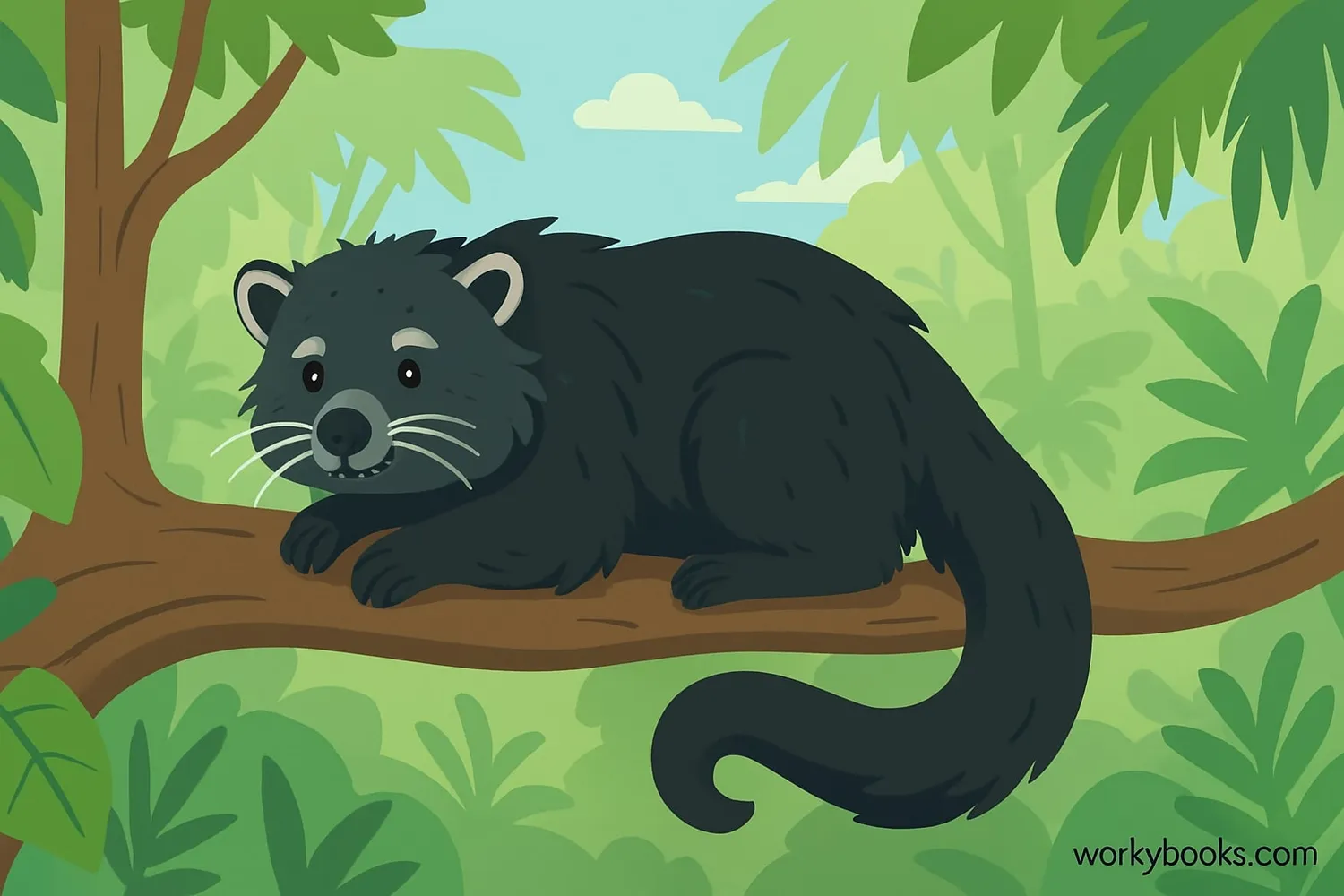
The binturong, also called a bearcat, is a unique mammal found in the rainforests of Southeast Asia. Despite its name, it's not related to bears or cats! Binturongs belong to the viverrid family, which includes civets and genets.
These fascinating creatures are known for their:
• Shaggy black fur
• Long prehensile tail
• Distinctive scent that smells like buttered popcorn
• Excellent tree-climbing abilities
Binturongs are mostly active at night (nocturnal) and spend much of their time in trees.
Name Origin
The name "binturong" comes from an extinct language of the Malaysian Peninsula. Local people have many different names for this animal!
Physical Features
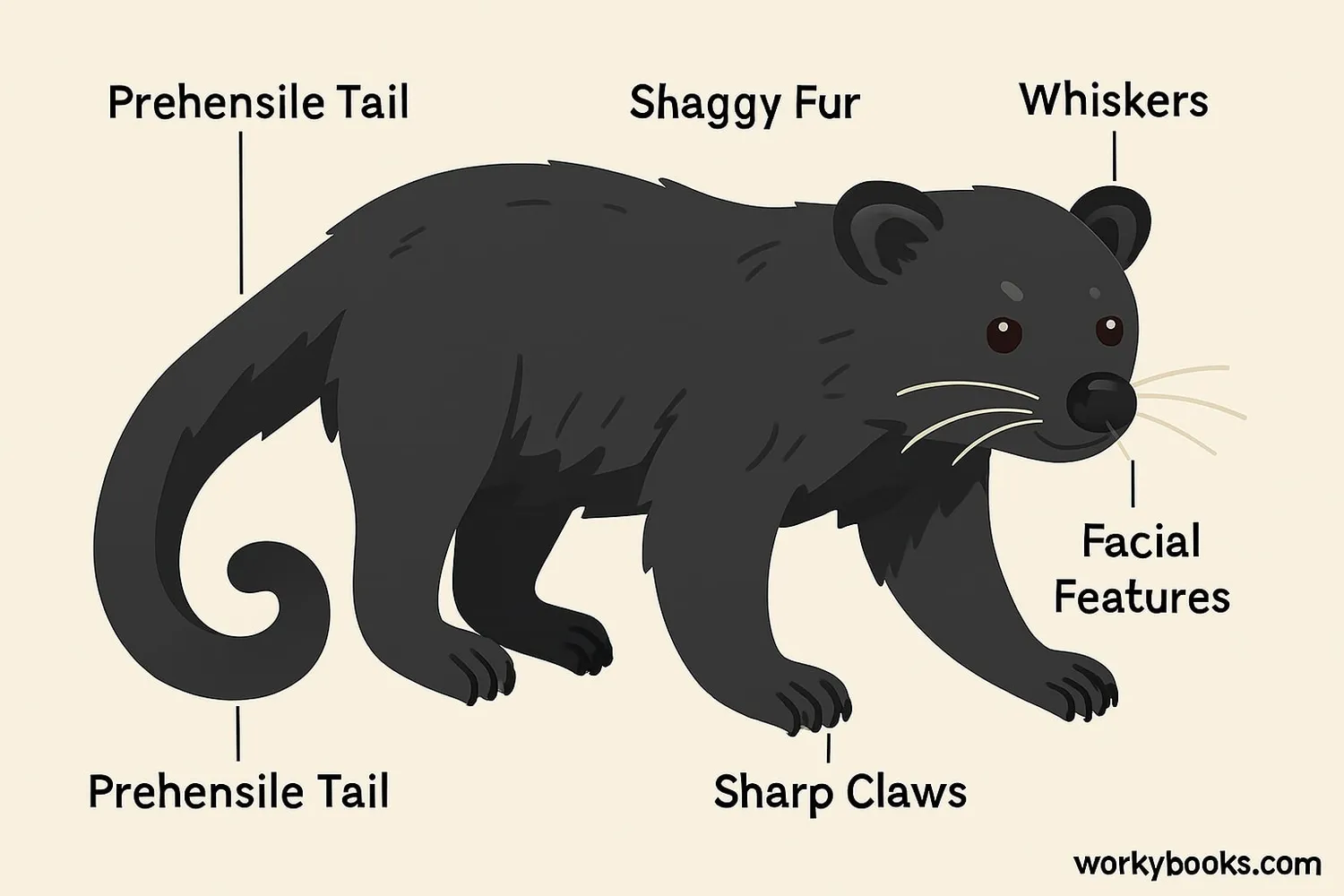
Binturongs have several unique physical features that help them survive in their rainforest habitat:
Size
2-3 feet long body, plus 2-3 foot tail. Weigh 25-50 pounds
Tail
Prehensile tail acts like a fifth limb for climbing
Fur
Long, coarse black fur with white or silver tips
Face
Small rounded ears, long whiskers, small eyes
Claws
Semi-retractable claws for climbing trees
The most amazing feature is their popcorn smell! Binturongs produce a special scent from glands under their tail that smells exactly like buttered popcorn. This scent helps them mark their territory and communicate with other binturongs.
Tail Power!
Binturongs are one of only two carnivores with a prehensile tail (the other is the kinkajou). Their tail is so strong it can support their entire body weight!
Habitat
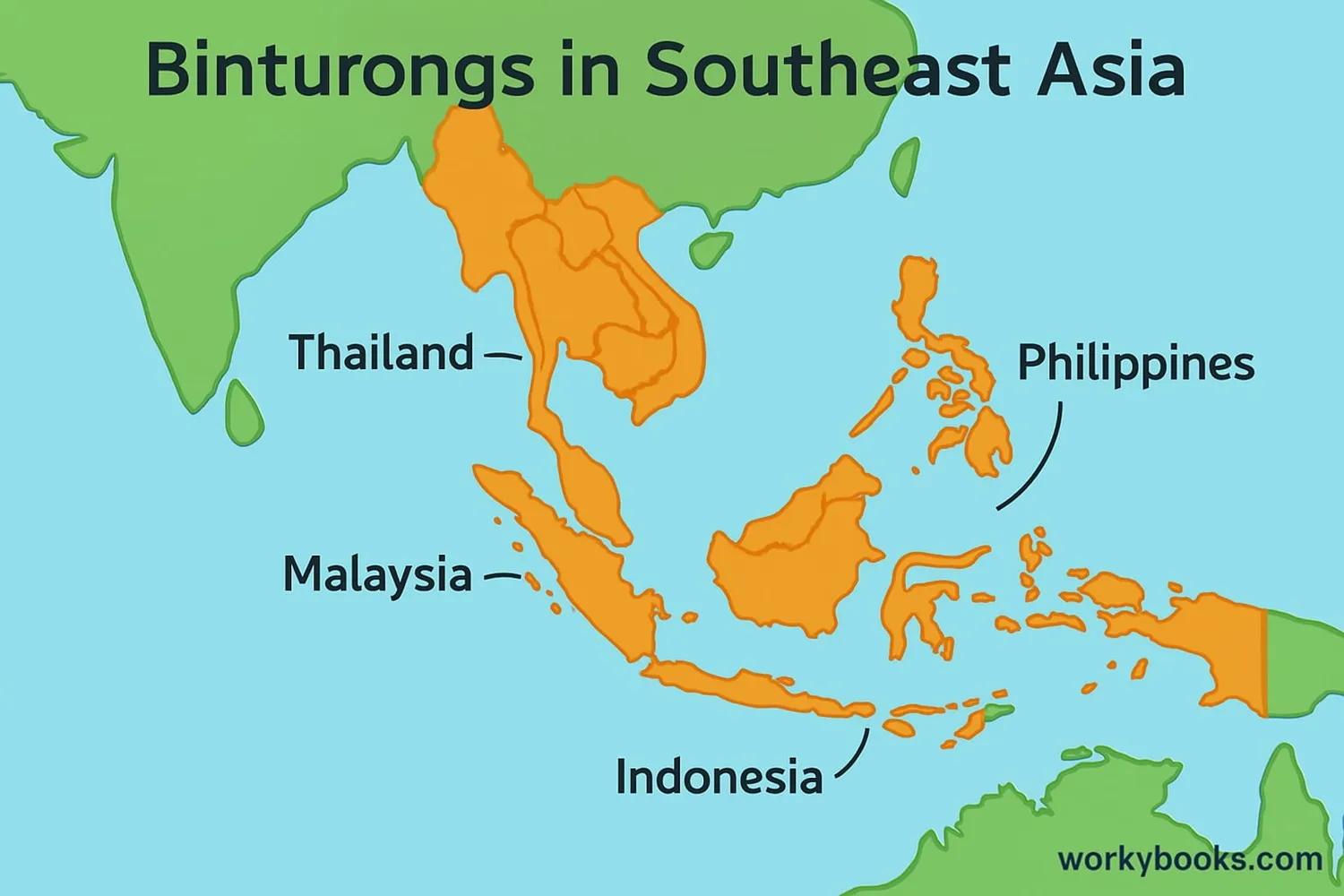
Binturongs live in the dense tropical rainforests of Southeast Asia. Their range includes:
Countries: Thailand, Malaysia, Indonesia, Philippines, Vietnam, Cambodia, Laos, Myanmar, Bangladesh, and parts of India
Preferred Habitat: Dense, tall forests near water sources. They spend most of their time high in the trees (arboreal).
Unfortunately, binturong habitats are shrinking due to deforestation. These animals need large forest areas to survive, as each binturong may have a territory of up to 4 square miles!
Diet
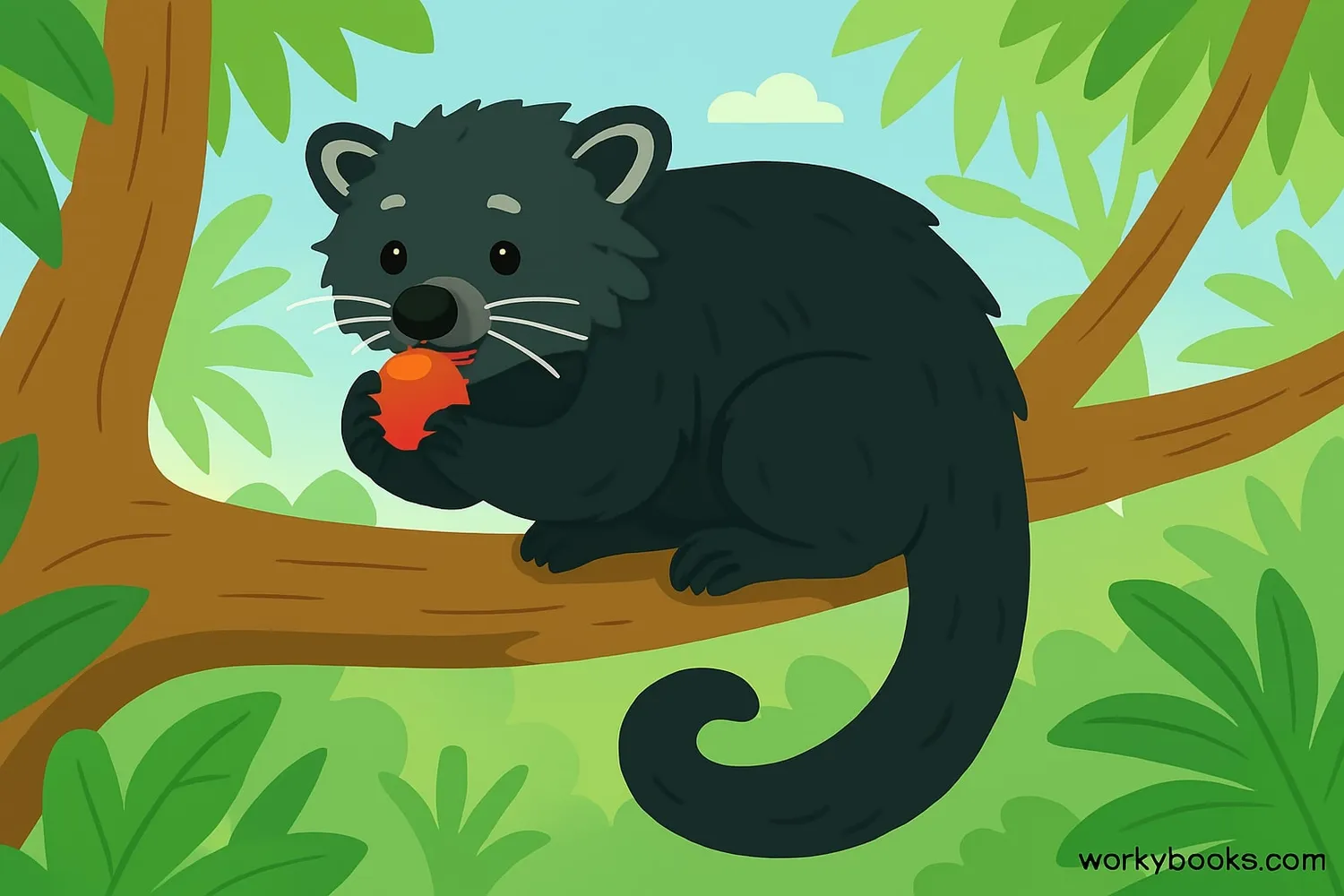
Binturongs are omnivores, meaning they eat both plants and animals. Their diet includes:
• Fruits (especially figs)
• Leaves
• Shoots
• Birds and bird eggs
• Insects
• Small mammals
• Fish
Binturongs play an important role in their ecosystem as seed dispersers. When they eat fruit, they spread seeds through their droppings, helping new plants grow throughout the forest!
Fruit Specialists
Binturongs are especially important for spreading fig tree seeds. Their digestive system helps prepare the seeds for germination!
Behavior
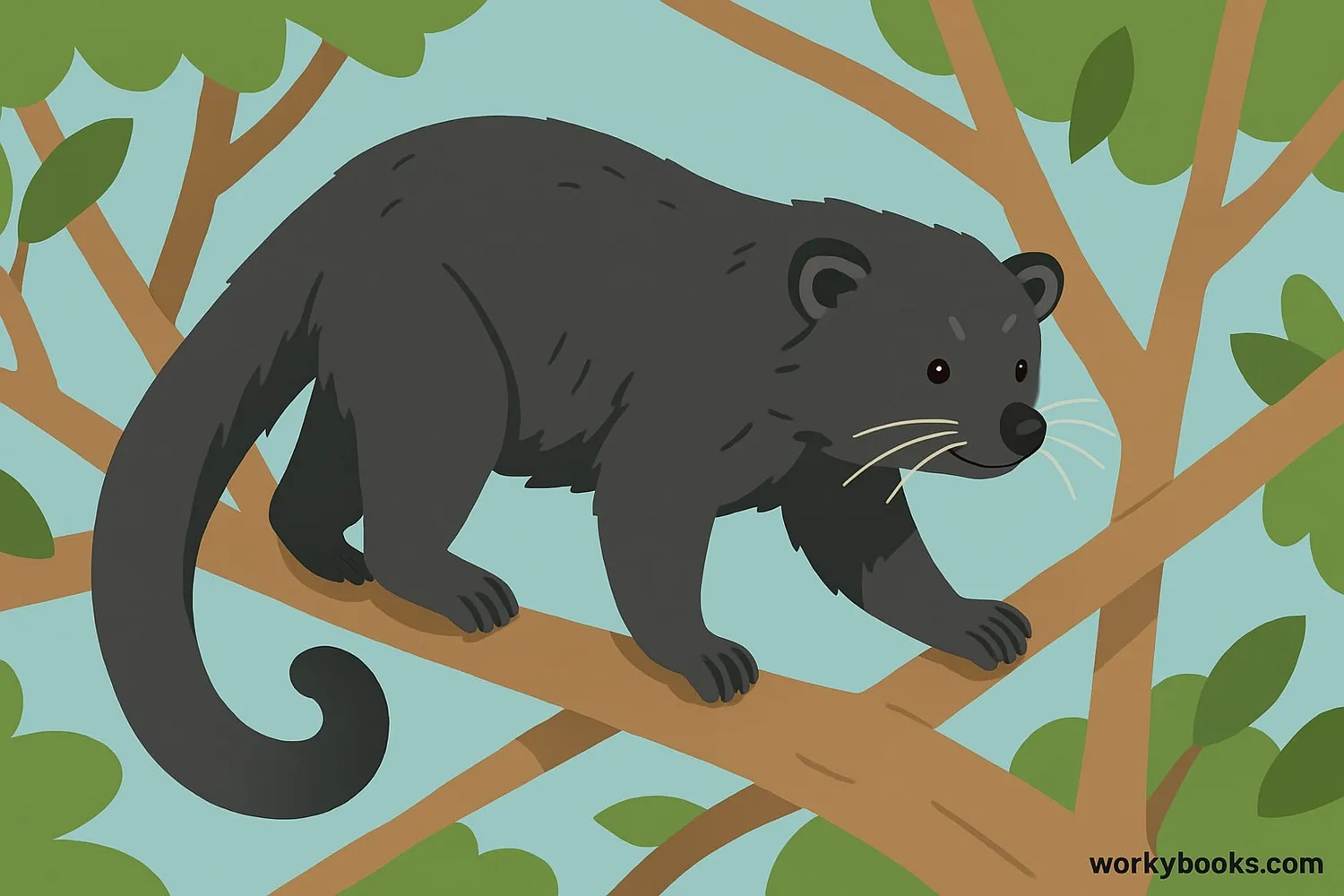
Binturongs have fascinating behaviors that help them survive in the rainforest:
Nocturnal
Most active at night, resting during the day
Arboreal
Spend most of their time high in trees
Social
Live in small family groups
Binturongs are excellent climbers who move slowly but confidently through trees. They use their tail like an extra arm to grip branches. When they need to come down to the ground, they descend head-first like squirrels.
They communicate through sounds like chuckles, grunts, and howls, and through their distinctive popcorn-like scent marking. Female binturongs are dominant and larger than males.
Conservation
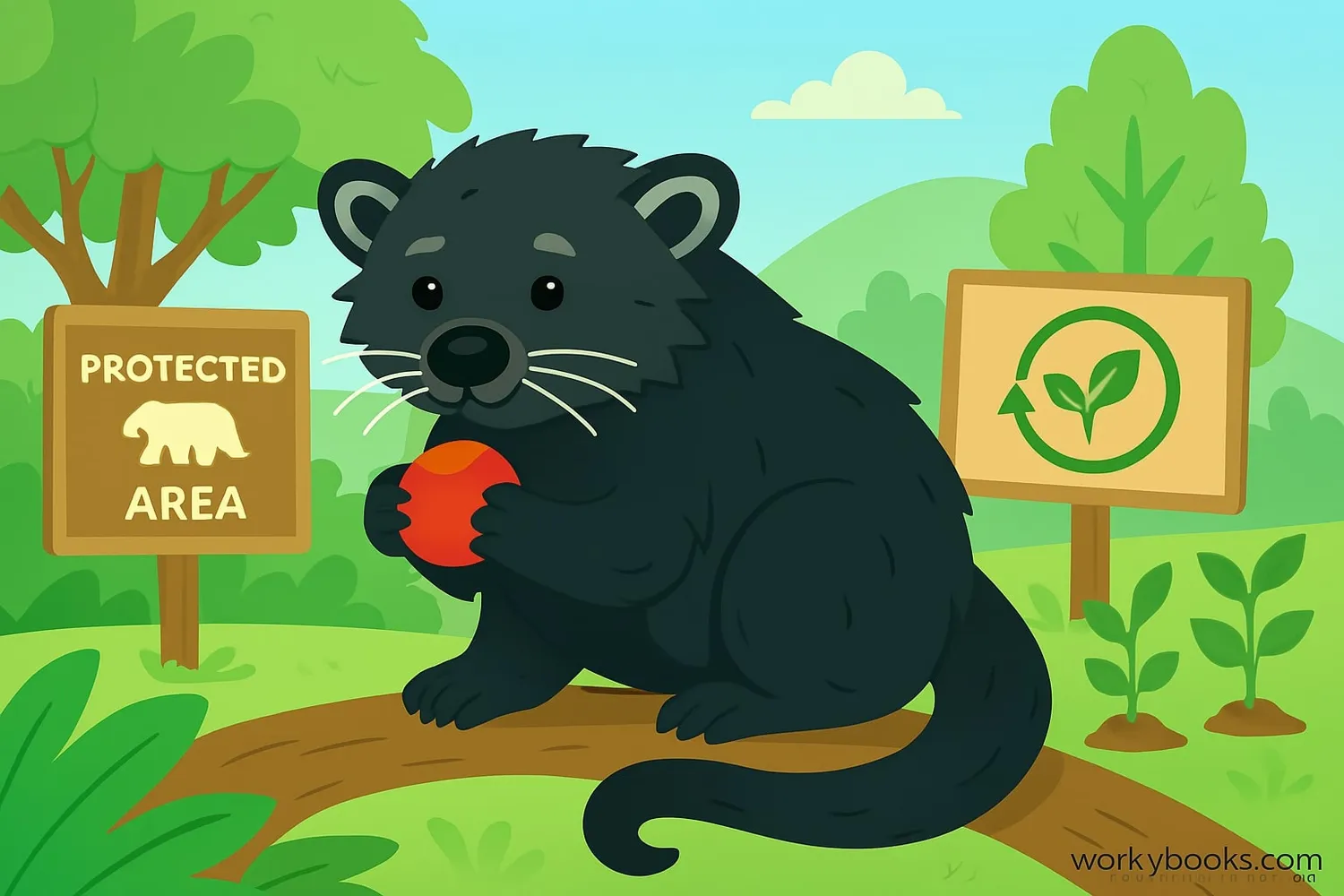
Binturongs are classified as Vulnerable by the International Union for Conservation of Nature (IUCN). This means they face a high risk of extinction in the wild.
Major threats include:
• Habitat loss from deforestation
• Illegal pet trade
• Hunting for meat and traditional medicine
• Forest fires
Conservation efforts are underway to protect binturongs:
• Creating protected forest areas
• Anti-poaching patrols
• Breeding programs in zoos
• Education programs for local communities
You can help by supporting organizations that protect rainforests and wildlife!
Binturong Quiz
Test your binturong knowledge with this quiz! Answer all 5 questions to see how much you've learned.
Frequently Asked Questions
Here are answers to some common questions about binturongs:
Fun Binturong Facts
Discover some amazing facts about binturongs!
Popcorn Connection
The chemical that makes binturongs smell like popcorn is the same one found in cooked popcorn, rice, and bread crusts!
Tail Power
A binturong's tail can grow as long as its body - up to 3 feet! They're one of only two carnivores with a prehensile tail.
Unique Movement
Binturongs walk flat-footed like bears, not on their toes like most carnivores. This gives them a distinctive waddling walk.
Delayed Birth
Female binturongs can delay implantation of fertilized eggs for several months, waiting for ideal conditions to give birth.





